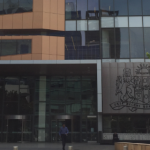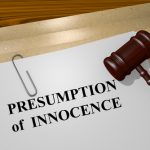Bail Laws in New South Wales: Should They Be Softened or Hardened?

There are renewed calls for stricter bail laws and the introduction of a publicly available national register of child sex offenders after a truck driver who was on bail for sexual offences allegedly sexually assaulted a 13-year old girl.
The case is now being urgently reviewed by New South Wales Attorney General Mark Speakman.
The man, Jason Humphreys, was charged last year with four counts of sexual intercourse without consent, one count of sexual touching without consent, assault occasioning actual bodily harm and intentionally choking a woman. He was granted bail ahead of a trial for those charges, which was to be heard in the District Court of New South Wales.
Mr Humphreys was arrested and charged with sexually assaulting and grooming a 13-year old girl he met on Snapchat late last year.
It’s alleged that he sexually assaulted the girl on several occasions in a home in Sydney’s south west, before hiding her in the sleeping compartment of a truck and assaulting her again on trip to and from the ACT.
Offending while on conditional liberty
There are a number of high-profile cases where people of conditional liberty – such as on parole (after the expiry of their non-parole periods) or on bail (awaiting the finalisation of their cases) have committed serious criminal offences.
For example, Adrian Bailey sexually assaulted and murdered Jill Meagher while he was on parole. He had a string of previous convictions.
Anthony Sampieri, the man who was sentenced to life in prison after sexually assaulting a young girl in a dance studio toilet in Kogarah in 2018, was also on parole at the time he committed the offence.
And in 2018, Glenn Hartland pleaded guilty to sexually assaulting three women and indecently assaulting a fourth in Melbourne County Court. Even so, he was granted bail, albeit under strict conditions including the imposition of exclusions zones – being suburbs he was forbidden to enter – as well as a requirement to report regularly to police.
Such cases have infuriated the community and, in some cases, led to the enactment of harsher parole and bail laws.
For certain offences, including many sexual offences, those who apply to be released on bail must now ‘show cause’ as to why they should be released, which effectively amounts to a reversal of the ‘presumption of innocence’ – in other words, in order to be released from custody, they must prove there are good reasons rather than the prosecution having to prove there are reasons to keep them behind bars.
There are concerns that publicity relating to cases like that of Mr Humphreys will lead to a situation where it is even more difficult for defendants to achieve bail, and in that regard it should be noted that many who are refused bail and who spend long periods of time behind bars awaiting the finalisation of their cases, ultimately have their charges dropped or thrown out of court.
Calls for an online sex offender register
The Humphreys case has also led to renewed calls for the introduction of a national child sex offender register which is publicly available.
These calls are despite the fact Mr Humphreys had not been convicted at the time he allegedly committed the offence against the 13-year old girl.
Currently, those who are convicted of prescribed sexual offences are placed on the Child Sex Offender Register of the relevant state or territory. These registers are not available to the public.
In 2019, Peter Dutton proposed to set up the a national online register for child sex offenders, on which the names, dates of birth, and general locations (postcode) photos and brief descriptions of the nature of offending would be published. But the proposal was mooted a short time later.
In New South Wales, as in all states except for Tasmania, sex offenders who have committed a prescribed offence are automatically listed on the sex offenders register – regardless of whether there are extenuating circumstances which may make it inadvisable. Due to the sensitivity of sex offences, there are special provisions in some jurisdictions for juvenile offenders not to have their details listed.
Western Australia established an operating database in 2012, although access to it is public, it is limited. Around the globe, the UK, the USA and South Korea amongst other countries, also have public child sex offender registers.
Do sex offender registers work?
However, there is no evidence to suggest that public child sex offender registers reduce offending rates.
To the contrary, there is evidence and research to suggest that being ‘named and shamed’ reduces the likelihood of rehabilitation, because those who have ‘served their time’ are more likely to be shunned by prospective employers and excluded from society generally. They are therefore less likely to reintegrate into the community and become gainful members of society. Of course, public registers also increase the chances of vigilantism.
Despite the evidence, those in favour of a public register contend that the apprehension of being publicly ‘named and shamed’ may be a deterrent to would-be offenders.
In relation to the protection of the community on bail or parole, these types of ‘conditional liberty’ can come with a range of stringent conditions, including being under supervision of the appropriate agency, living at least a certain distance from places such as schools or parks, and even electronic monitoring or electronic ‘tagging’. And ‘working with children’ checks can prohibit people from being employed in, or continuing employment in, jobs where there is contact with children.
And while neither bail or parole conditions, or a public register, will guarantee protection against offending, and noting that in the case of bail, there should always be a ‘presumption of innocence’, the debate continues on whether alleged or actual offenders should have their liberty restricted and, if so, to what extent.





